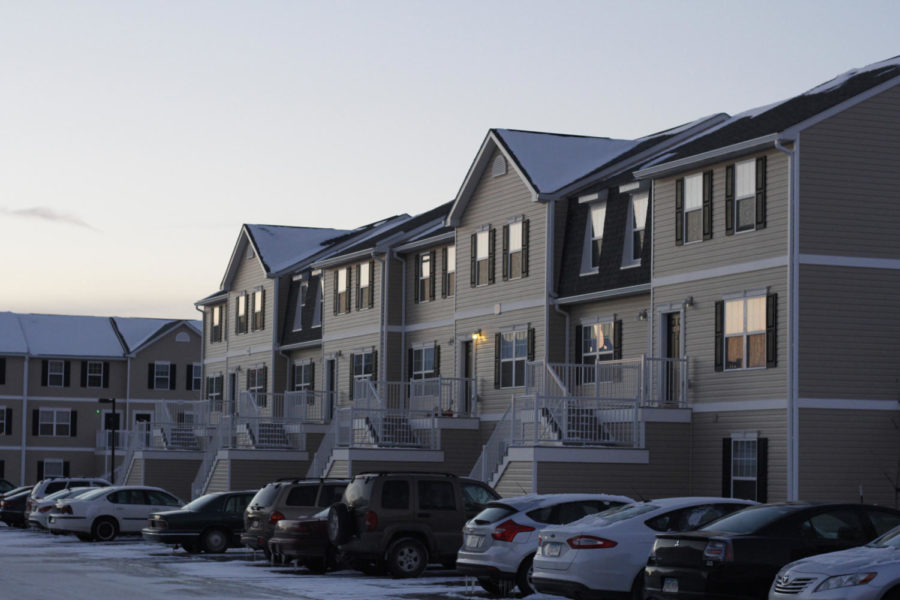High-density housing causes trouble for CyRide
Copper Beech is a new neighborhood in east Ames. The neighborhood was developed for the 2014-2015 school year. The townhome style of the apartments require neighbors to have a shared wall.
March 23, 2015
The number of high-density housing units are rising in the near future to accommodate both students and non-student residents.
A high residency evaluation tool was discussed and passed by the City Council to reconsider zoning areas for high-density living areas in Ames at the City Council meeting Jan. 13.
The council agreed to use the evaluation tool to look to in six different categories: location and surroundings, site features, housing types and design, transportation, public utilities and services and investment/catalyst.
A high-density housing facility would be considered a large apartment building or a series of apartment buildings forming a community. Frederiksen Court and the Fountain View Apartments in west Ames would be considered high density.
The city plans to create new locations for high-density housing, such as areas of South Duff, Mortensen Road and the Campustown area, which is currently under construction.
New residency brings more housing options for community residents and students. However, new routes cause trouble for CyRide.
“Since 2006, CyRide has increased ridership by 70 percent,” said John Haila, chairman of the Ames Transit Board. “One of the things that makes response to ridership demand so challenging is that most of the high residency developments are distributed throughout the community.”
Many of the new high residency locations do not have a bus route that goes out to them, Haila said.
While CyRide cannot afford to keep up with the growth of Ames because of the yearly increase in students and long-term Ames residents, the city has to build to keep up with population growth.
“We have to think about more than just the students,” said housing director Kelly Diekmann. “Long-term Ames residents and people who are out of college are going to live in these locations too.”
Though Diekmann mentioned that the information on who is looking to live in apartments would be difficult to retrieve, council member Peter Orazem mentioned that those numbers would be beneficial when deciding where the new high density housing units should go in the Jan. 13 City Council meeting.
The evaluation tool is still in process of being created and the council is using it to best decide where new high-density locations can go so that all six of the qualifications can be met, as well as giving the residents nearby locations for the public transit system.
The matter will be discussed again in future agenda.

















